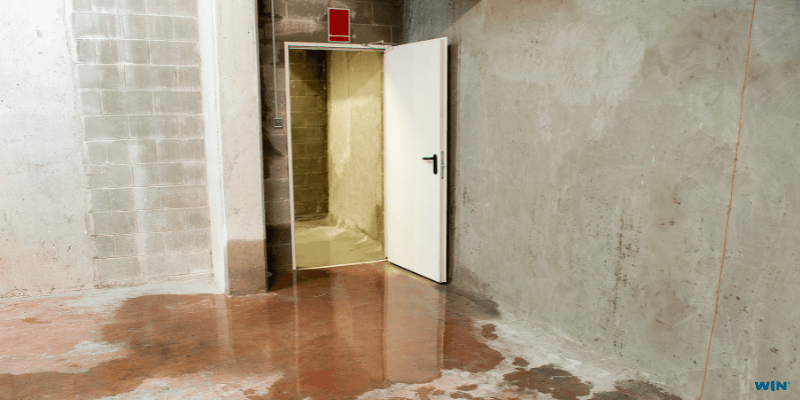The structure of your home is much like your skeleton. The “bones” of the house create its shape and support the weight of its walls and roof.
When something goes wrong with that structure, however, it can affect the home’s stability and safety, as well as its long-term value.
Structural problems often start small and get worse over time, and that’s why early detection is essential. Think of the Leaning Tower of Pisa, which was built on soft soil. Settling began early, but due to centuries of stabilization efforts, it remains standing and safe.
Keep in mind that most homes settle naturally without major problems. But sometimes, structural shifting can be serious. Knowing which signs are normal and which indicate potential damage and need attention can help you catch issues before they get worse.
Here are the most common signs of structural damage and how a professional inspection can help protect your home and keep it safe.
1. Cracks in Walls, Floors, or Ceilings

If you spot a few hairline cracks in drywall (sheetrock), it may not be a cause for concern. That said, large or expanding cracks can indicate significant foundation movement or signs of settling that could lead to more problems.
Watch for:
- Horizontal cracks along basement or foundation walls
- Cracks shaped like stair steps in brick or concrete block walls
- Cracks that appear near door frames or windows
For example, a long horizontal crack in a basement wall after heavy rain can mean hydrostatic pressure is pushing against the foundation. In some cases, foundation cracks can be caused by tree roots from nearby trees.
If you can fit a coin sideways into a crack, it’s time to call a professional for an inspection.
2. Doors and Windows That Stick or Jam
When a house’s frame shifts even slightly, doors and windows may be hard to open or close. You might even notice that they’re catching at the corners.
Sometimes, sticking or jamming is caused by wood swelling in high humidity. But if you live in a dry climate or the sticking occurs during a dry season, especially in several rooms, it could be due to foundation movement or a framing shift. Structural movement can distort openings, leading to jams or misalignment.
Try opening the same door at different times of year or in various weather conditions. If it sticks consistently, the issue may be a sign of structural damage, not a seasonal occurrence.
3. Gaps Between Doors or Windows and Frames
Small gaps between door or window frames and the surrounding wall are intentional. For windows, they’re meant to allow normal settling and swelling or shrinking as the weather changes. The gaps around door frames let installers adjust the frame as needed. The gaps are usually filled with insulation and covered with trim.
A large, visible gap or one with significant drafts can be a sign of structural shifting or a sinking foundation. In extreme cases, you might see daylight through the frame edges or, while outside at night, a sliver of light shining from indoors.
Structural movement can also cause stress cracks in corners and above openings, which may indicate serious concerns. A professional home inspection can pinpoint the cause and, if needed, suggest remedies to prevent further damage.
4. Uneven or Sloping Floors
Floors that sag, bounce, or slope noticeably can point to underlying structural problems, including:
- Foundation settlement
- Moisture damage in floor joists
- Deterioration of support beams or posts
- Improper notching and boring in floor joists
You might notice furniture leaning, cabinet doors swinging open, or a marble rolling to one side of the room. Pens and pencils might roll off a table.
An experienced home inspector will examine the floors and supporting joists and look for other potential signs of damage or settlement.
5. Moisture or Water in the Basement or Crawl Space

Water can cause severe damage to a home’s structure. Flooding is one thing, and most homeowners are aware of the damage a flood can cause. But persistent leaks or dampness in the basement can be just as serious and lead to rot, mold, and even foundation weakening.
Look out for:
- Damp or musty smells
- Standing water after heavy rain
- White, powdery residue (efflorescence) on basement walls
- Unusually high water bill
Trapped moisture and invisible leaks can rot wooden beams or rust metal supports. It can also lead to mold growth and serious health problems. Fixing leaks and drainage or grading issues early can prevent expensive repairs later.
6. Gaps Between Walls, Ceilings, or Floors
As a home settles into the soil beneath it, various parts may shift unevenly. That movement can create gaps between walls and ceilings. You might even see gaps between floors and walls.
Sometimes the cause is simple. If the joint tape and joint compound (sometimes called spackle) that covers the seams between the drywall and ceiling or adjoining wall weren’t applied correctly, they can peel off, revealing the gap.
More serious issues include foundation problems and walls with insufficient load-bearing capacity.
Watch also for gaps between exterior walls and trim and countertops separating from the walls. Gaps like these may indicate that your framing or foundation needs a professional evaluation.
7. Sagging Roofline or Bowed Rafters
Your roof isn’t just shingles or tiles that keep you dry. It’s an integral part of your home’s structure, and a sagging roof or uneven gutter line can signal trouble. If you get a lot of snow in your area, the weight can strain rafters. Worn shingles can also cause leaks that, if not repaired, can rot the sheathing and rafters underneath.
A professional roof inspection from WIN Home Inspection can catch these problems before leaks or collapse occur, giving you time to make repairs while they’re still manageable.
Why Structural Damage Should Never Be Ignored
Structural problems don’t fix themselves. Ignoring early warning signs can lead to:
- Progressive worsening of the problem
- Pests entering the home
- Mold growth from leaks
- Costly repairs down the line
- Reduced home value
- Health hazards
- Safety risks
Almost any kind of structural damage can also compromise wiring, plumbing, and even load-bearing walls. Professional home inspectors can assess symptoms, identify causes, and recommend the appropriate course of action.
How WIN Home Inspection Helps
At WIN Home Inspection, our trained inspectors carefully evaluate your home’s structure during a Full Home Inspection, Foundation Inspection, or Roof Inspection. We use advanced tools, such as moisture meters and infrared (IR) scanners, to identify potential issues before they become costly problems.
For example, an IR scan might reveal hidden moisture behind basement walls that look perfectly dry. Catching issues like this early can save homeowners thousands in repairs.
Key Takeaway
The signs of structural damage can develop slowly, but its impact can be serious. By learning the warning signs and scheduling regular home inspections, you can protect your home’s stability, safety, and value.
Your home is more than just a building. It’s a part of you. Care for it by watching for small changes that might mean bigger problems. WIN Home Inspection helps you see those changes and problems more clearly.
Contact us for a WIN Home Inspector near you!
Get the Latest Insights!
Sign up to stay up to date with latest tips, trends and updates from WIN.












